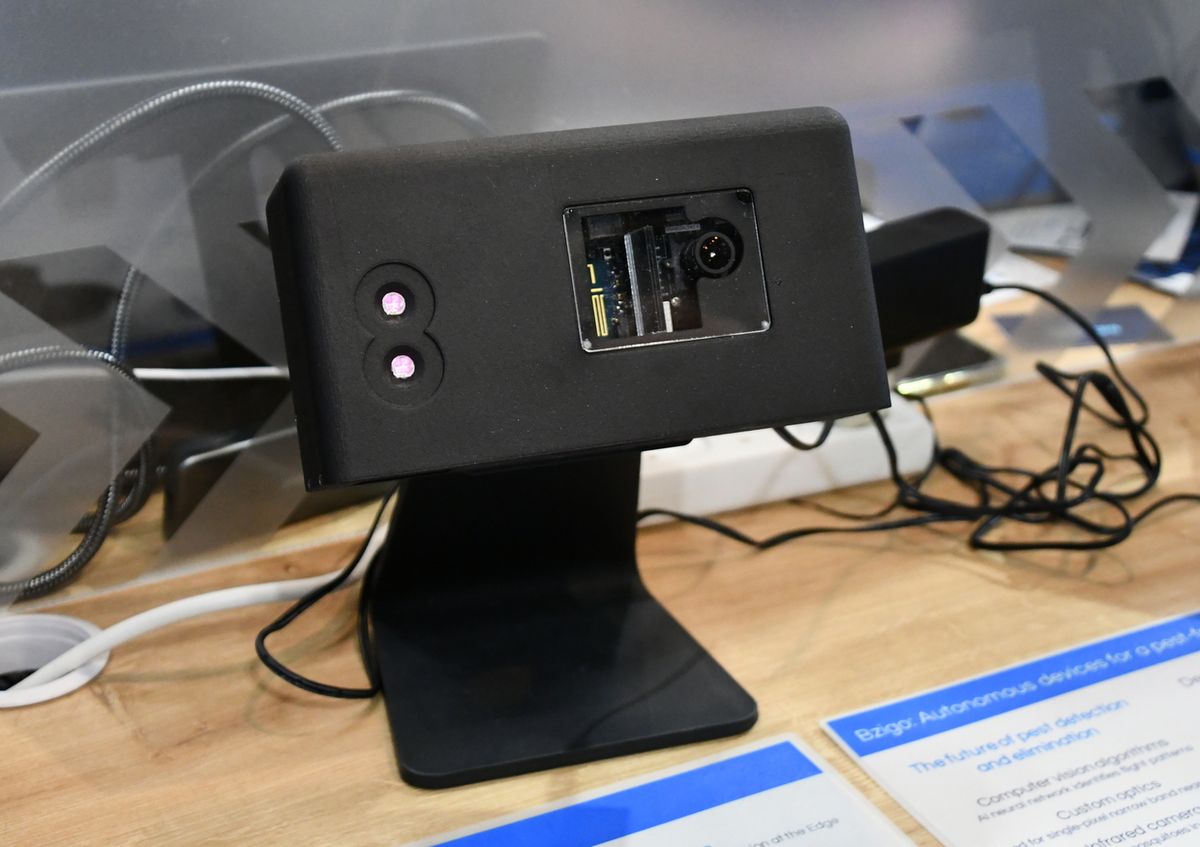As far as I know, the current state of the art in indoor mosquito management is frantically trying to determine where that buzzing noise is coming from so that you can whack the damn bug before it lands and you lose track of it.
This “system” rarely works, but at CES this week, we found something better: Israeli startup Bzigo (the name of both the company and the product), which makes a mosquito detection and tracking system that combines an IR camera and laser designator with computer vision algorithms that follows mosquitoes as they fly and tells you exactly where they land to help you smash them. It’s not quite as deadly as the backyard star wars system, but it’s a lot more practical, because you’ll be able to buy one.
Bzigo’s visual tracking system can reliably spot mosquitoes at distances of up to 8 meters. A single near-IR (850nm) camera with a pair of IR illuminators and a wide angle lens can spot mosquitoes over an entire room, day or night. Once a bug is detected, an eye-safe laser will follow it until it lands and then draws a box around it for you so you can attack with your implement of choice.
At maximum range, you run into plenty of situations where the apparent size of a mosquito can be less than a single pixel. Bzigo’s AI relies on a mosquito’s motion rather than an identifiable image of the bug itself, and tracking those potentially intermittent and far-off pixel traces requires four 1GHz cores running at 100% continuously (all on-device). That’s a lot of oomph, but the result is that false positives are down around 1%, and 90% of landings are detected. This is not to say that the system can only detect 90% of bugs— since mosquitoes take off and land frequently, they’re almost always detected after just a few flight cycles. It’s taken Bzigo four years to reach this level of accuracy and precision with detection and tracking, and it’s impressive.
The super obvious missing feature is that this system only points at mosquitoes, as opposed to actually dealing with them in a direct (and lethal) way. You could argue that it’s the detection and tracking that’s the hard part (and it certainly is for humans), and that automated bug destruction is a lower priority, and you’d probably be right.
Or at least, Bzigo would agree with you, because that’s the approach they’ve taken. However, there are plans for a Bzigo V2, which adds a dedicated mosquito killing feature. If you guessed that said feature would involve replacing the laser designator with a much higher powered laser bug zapper, you’d be wrong, because we’re told that the V2 will rely on a custom nano-drone to destroy its winged foes at close range.
Bzigo has raised one round of funding, and they’re currently looking to raise a bit more to fund manufacturing of the device. Once that comes through, the first version of the system should be available in 12-14 months for about $170.
Evan Ackerman is a senior editor at IEEE Spectrum. Since 2007, he has written over 6,000 articles on robotics and technology. He has a degree in Martian geology and is excellent at playing bagpipes.



